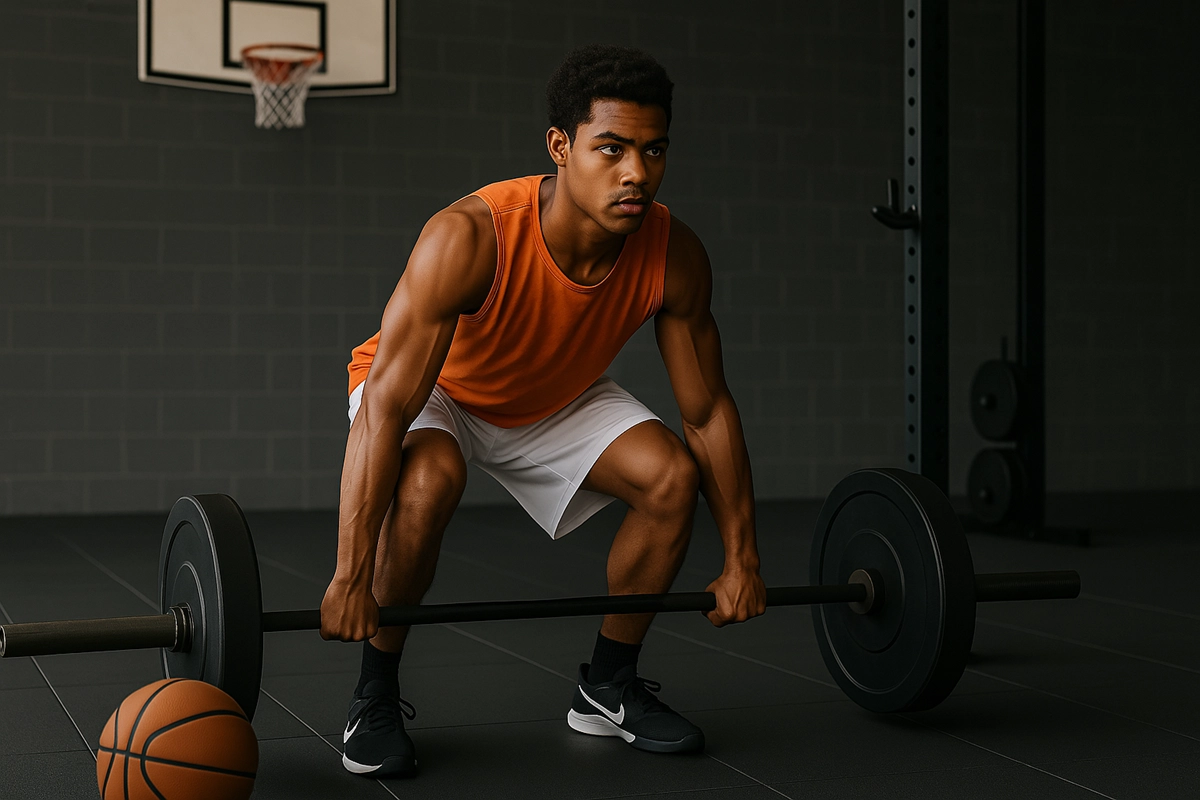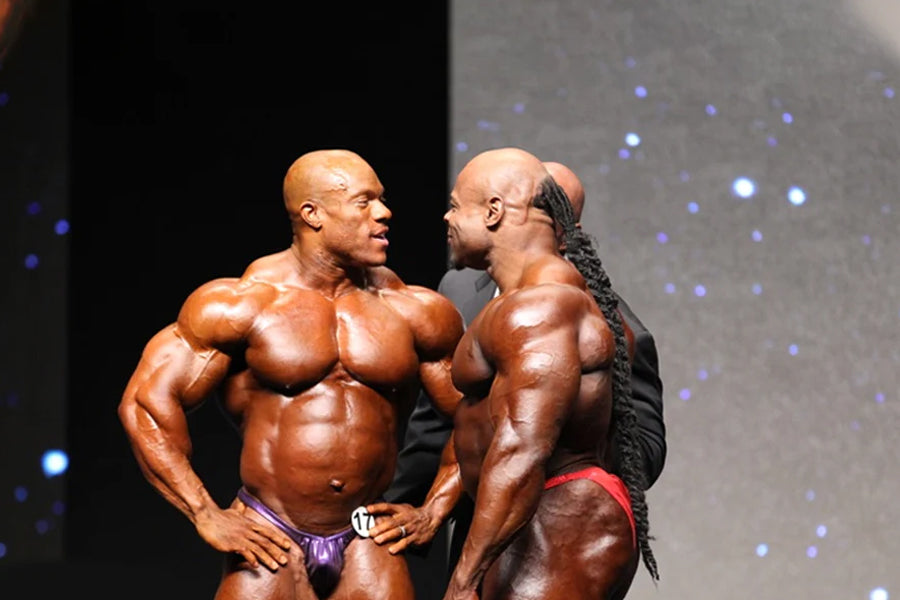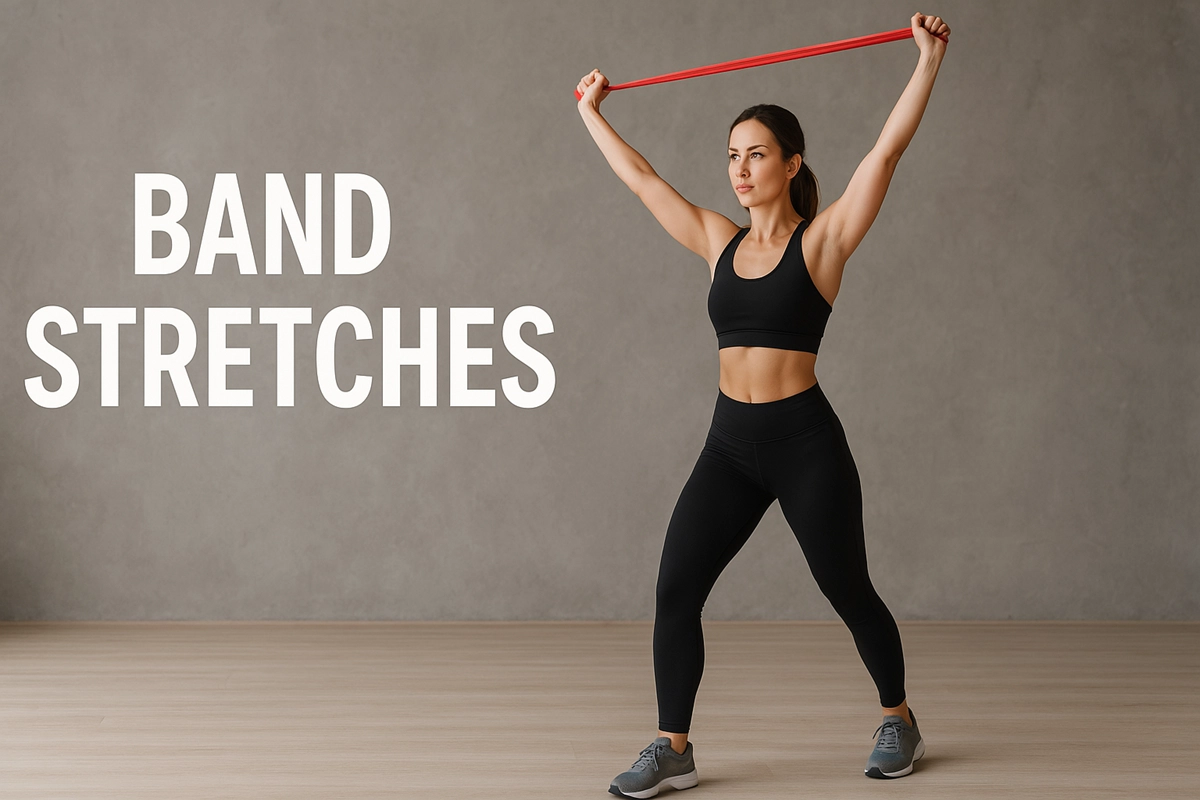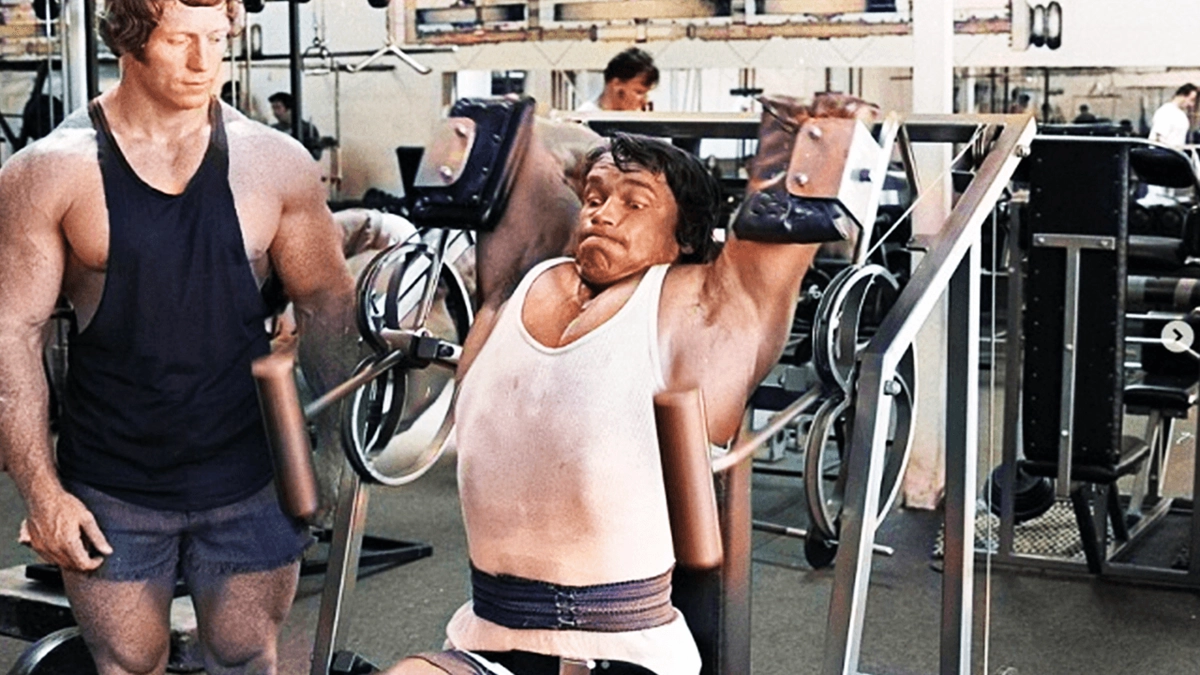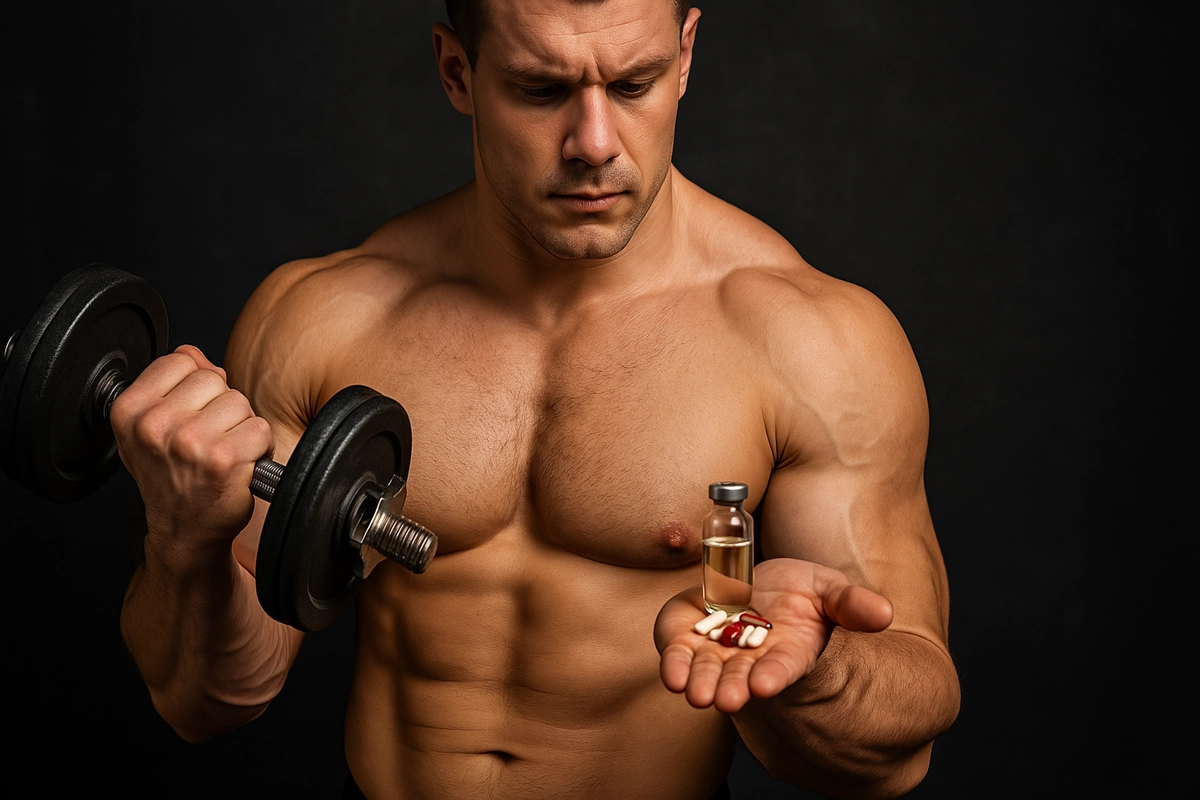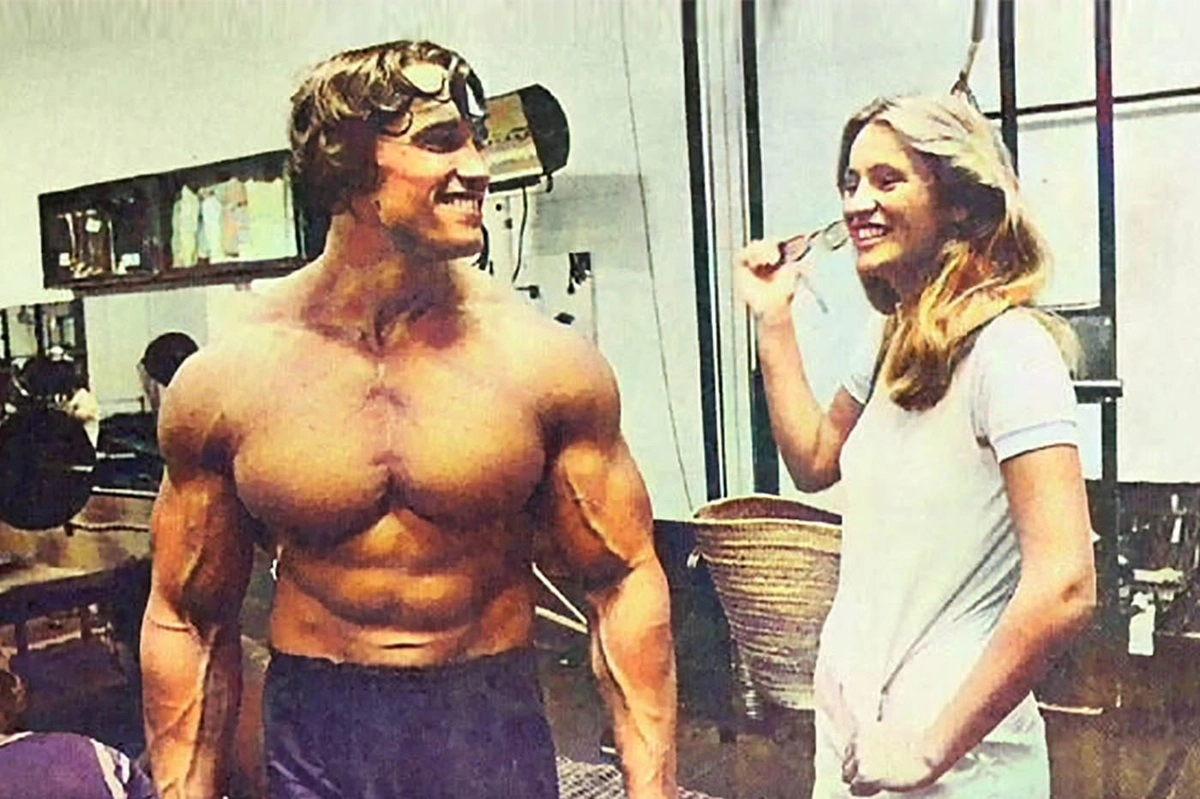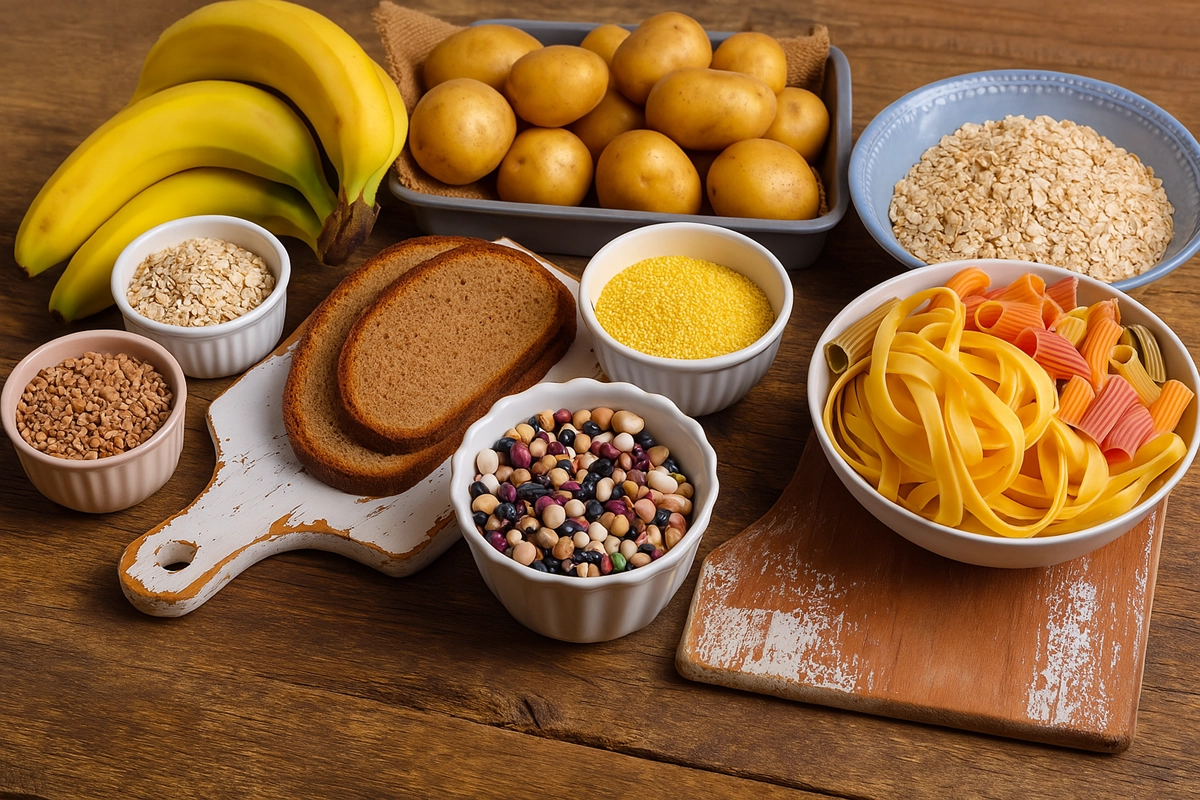You’ve seen those explosive moves on the basketball court – the powerful dunks, lightning-quick direction changes, and unstoppable drives to the hoop. They’re not just about natural talent. Strategic strength training transforms average players into dominant forces through targeted power development and injury prevention.
Arnold once said, “The last three or four reps are what makes the muscle grow,” and that same principle applies to basketball-specific training. Let’s reveal the exercises that’ll take your game to the next level.
Strength Training for Basketball
When it comes to building a basketball-ready physique, strength training serves as your foundation for explosive power and injury prevention.
You’ll need to focus on developing multiple strength types to excel on the court, including speed, strength, and absolute strength.
Your basketball strength training program should prioritize exercises that enhance blast impulse—the key to generating quick, powerful movements during gameplay.
Core training isn’t just about abs; it’s about building a stable foundation that’ll help you change directions faster and maintain balance during intense plays.
Key Muscle Groups For Basketball Players
Strong legs are essential for basketball players. Squats and lunges help build leg muscles. These exercises improve jumping and running speed. The quadriceps and hamstrings are key muscles to focus on.
Upper body strength is essential for practical shooting and passing. Push-ups and bench presses are excellent exercises for this purpose. They work the chest, shoulders, and arms. Strong arms are beneficial in both defense and offense.
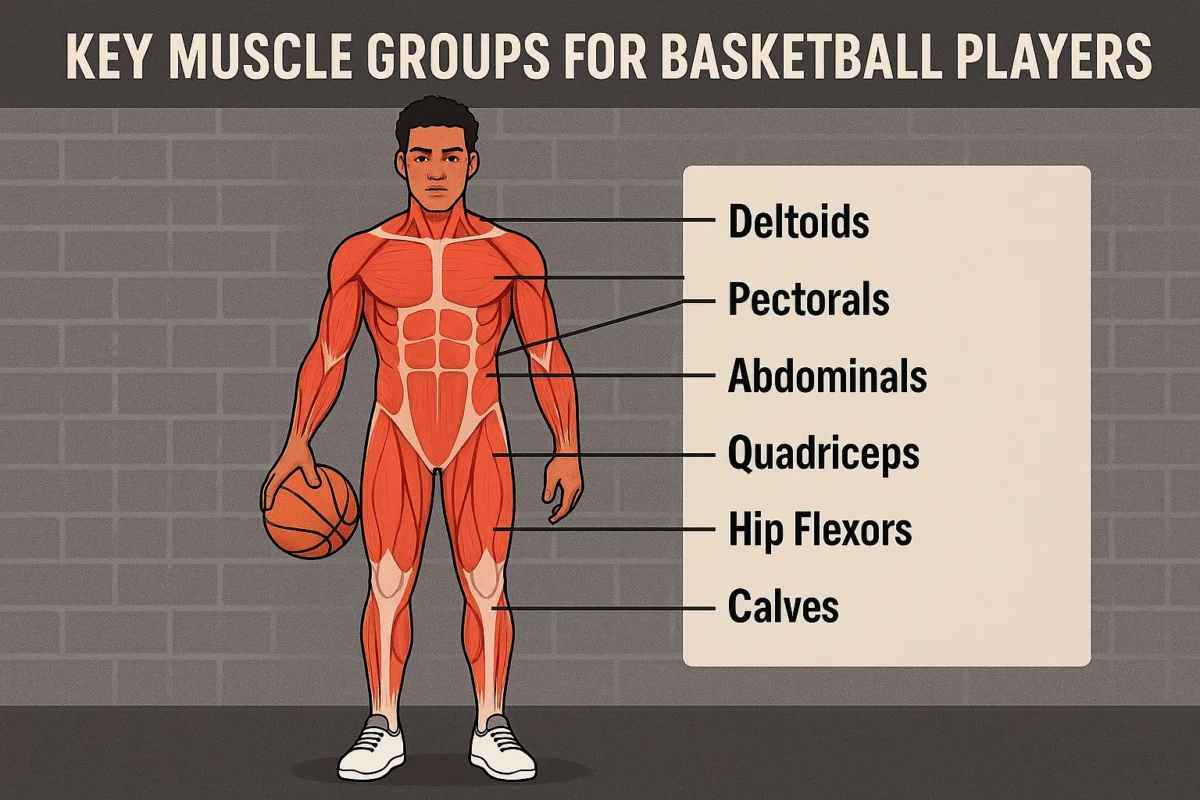
A strong core improves balance and stability. Planks and sit-ups target the core muscles. Core strength helps in quick movements. It also reduces the risk of injuries.
Fundamentals Of A Basketball Strength Program
A good basketball strength program needs balance. Players must be strong and flexible. Strength helps in powerful movements. Flexibility helps in quick changes. Both are equally important for success.
Training should include lifting weights and stretching exercises. This ensures players do not get injured. Strong muscles are beneficial for both defense and offense. Flexible muscles help in speed and agility.
Periodization is essential in training. It divides the year into phases. Each phase has a specific goal. One phase might focus on building strength. Another phase is maintaining stability.
The timing of each phase is crucial. Training too hard for too long can cause burnout. Proper rest is also part of periodization. This helps in recovery and growth. Following a structured plan ensures consistent progress.
Essential Strength Exercises For Hoops
Squats help build strong legs. They improve jumping power and stability. Players can stay strong during games. Perform squats with proper form. Use weights to increase difficulty.
Deadlifts strengthen the back and legs. They help with explosive movements. Good form is crucial to avoid injury. Start with light weights and increase slowly.
Plyometric drills boost quickness and agility. Box jumps are a popular choice. They improve vertical leaps. Jump rope helps foot speed. Ladder drills enhance coordination. These drills are fun and effective.
Push exercises build chest and shoulder strength. Push-ups are simple and effective. Bench press adds more challenge. Dips strengthen triceps and chest.
Pull exercises target the back and biceps. Pull-ups are an excellent exercise for developing upper-body strength. Rows improve back muscles. Use dumbbells or a barbell for rows.
Injury Prevention Through Strength Training
Basketball players often get injured. Ankle sprains are very common. Knee injuries also happen a lot. Shoulder injuries can also be a problem. These injuries can keep players out of the game.
Strength training helps prevent injuries. Squats and lunges make legs stronger. Core exercises protect the back. Stretching keeps muscles flexible. Balance exercises help with stability. Players should warm up before games. Cooling down after games is essential too.
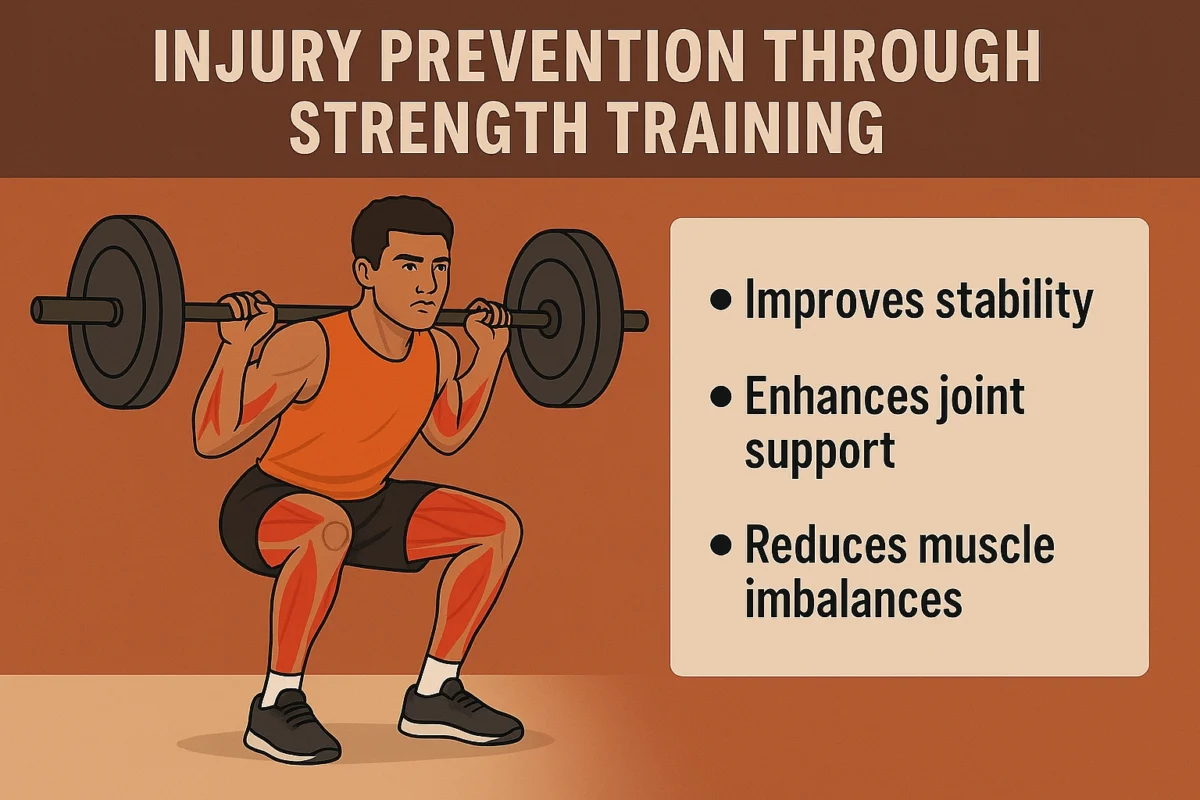
Integrating Cardio With Strength Work
Basketball strength training incorporates cardio exercises to enhance endurance, agility, and overall performance on the court. Combining these workouts enhances stamina and builds muscle, which are essential for competitive play.
1. Aerobic Vs. Anaerobic Training
Aerobic training helps build endurance. It includes activities like running or swimming. This type of training is essential for long games.
Anaerobic training focuses on short bursts of energy. It includes exercises like sprints or high-intensity drills. Basketball players need both types of training. Aerobic exercises keep players going longer.
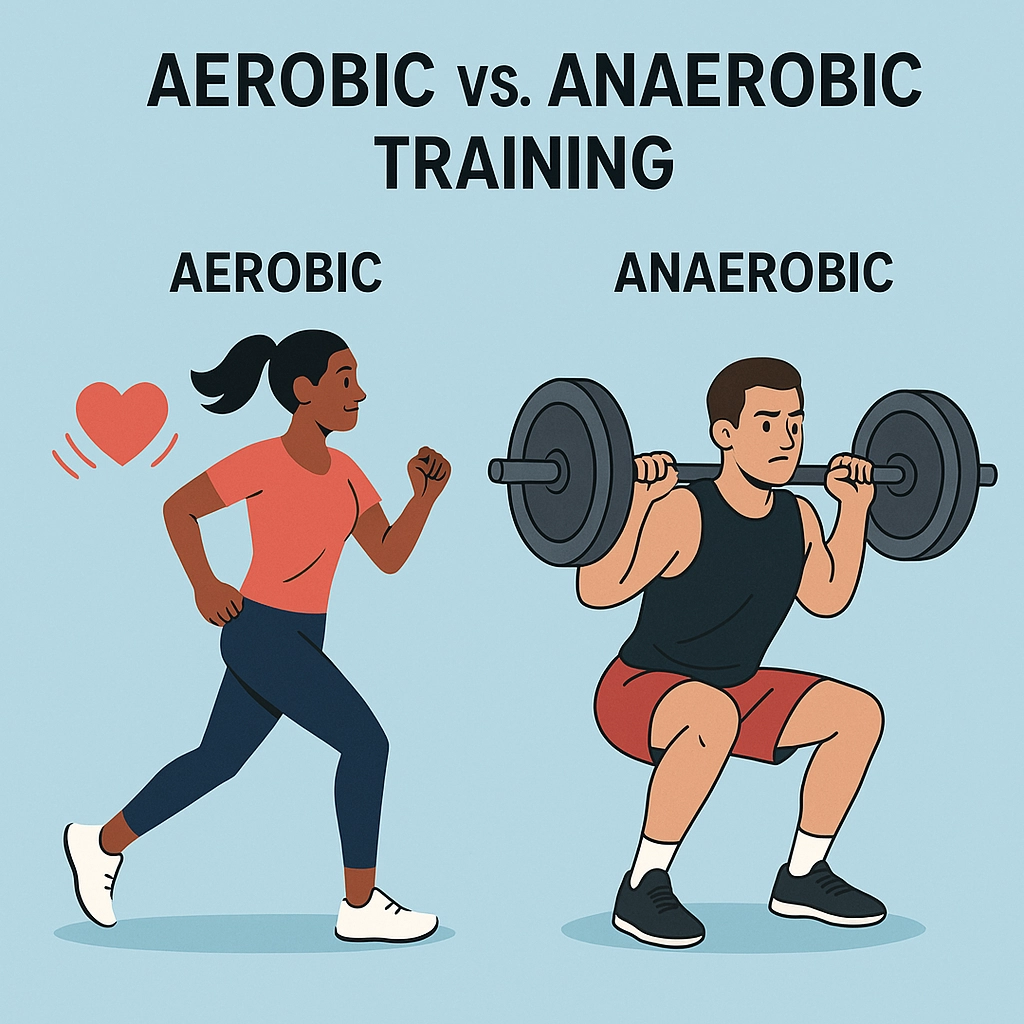
Anaerobic exercises are beneficial for quick movements and jumps.
2. Designing A Balanced Workout Plan
A balanced workout plan should incorporate both cardio and strength training. Here is a simple plan:
| Day | Activity |
| Monday | 30 minutes running, upper body strength training |
| Tuesday | Rest or light stretching |
| Wednesday | 20 minutes of sprints, lower body strength training |
| Thursday | Rest or yoga |
| Friday | 30 minutes of swimming, full body strength training |
10 Strength Exercises for Basketball
The foundation of basketball-specific strength training lies in compound movements that mimic the dynamic actions performed on the court.
Your strength training program should focus on explosive power and functional stability through key exercises:
- Power cleans develop the explosive hip drive needed for rebounding and jumping
- Trap bar deadlift improves overall lower body strength while maintaining proper posture
- Romanian deadlifts target your posterior chain for better acceleration and deceleration
Like Arnold’s famous “power comes from the ground up” philosophy, basketball strength requires a balanced approach.
You’ll want to incorporate weight training that enhances both your vertical power and lateral agility.
These movements build the muscular foundation you need while enhancing your court performance and reducing your risk of injury.
Exercise #1 – High Hang Power Clean
Power up your basketball strength training with the high hang power clean—a dynamic Olympic lift that develops explosive force and athletic power essential for dominating the court.
This performance training exercise targets multiple muscle groups simultaneously through a triple flexion action of your hips, knees, and ankles. You’ll see immediate improvements in your vertical jump height and acceleration on the court.
The high hang power clean isn’t just about raw strength – it’s about developing that explosive power production you need for rebounds and drives.
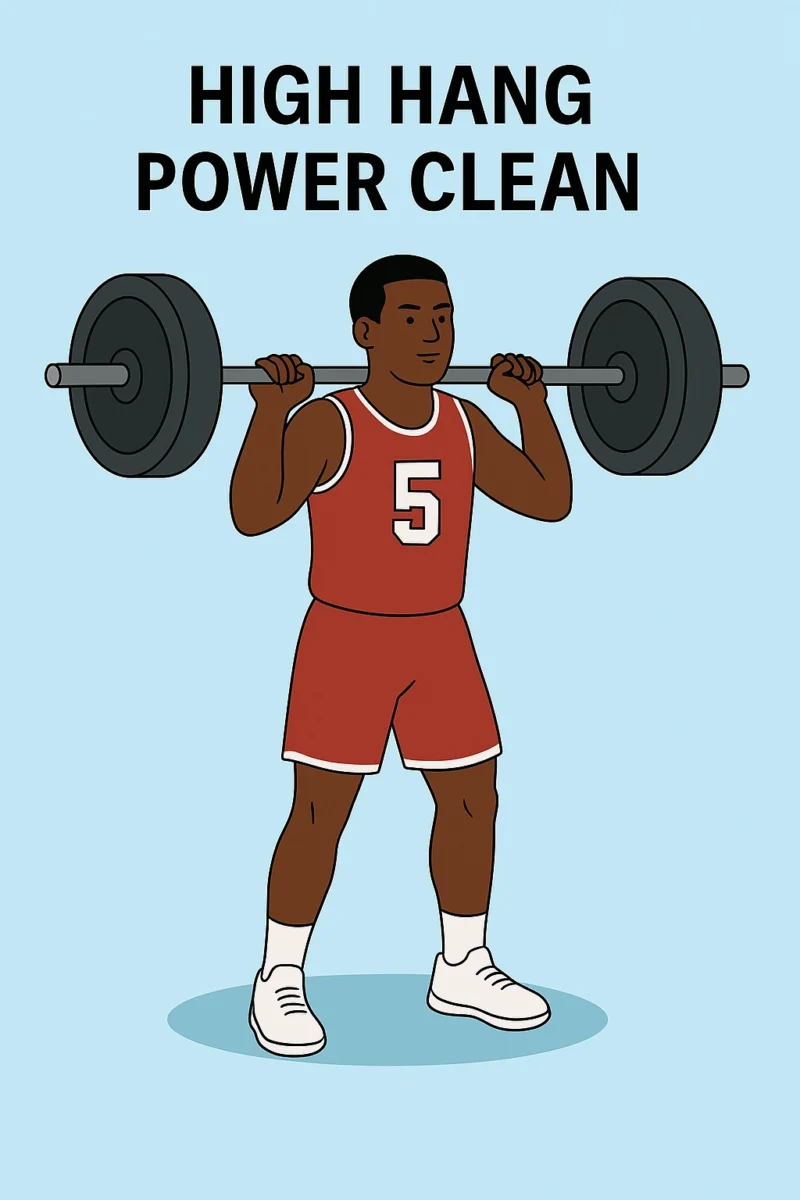
When you incorporate this lift into your training program, you’re also enhancing your neuromuscular coordination. That means smoother movements and better body control during intense gameplay.
It’s a technical lift that’ll transform your athletic performance, giving you that explosive edge every basketball player needs.
Exercise #2 – Power Jerk
Building on the explosive foundation of the high hang power clean, you’ll want to master another dynamic Olympic lift that’ll take your game to new heights – the power jerk. This powerful core exercise starts with the weight on your back before you explosively drive it overhead.
What makes the power jerk essential for basketball training is its ability to develop two critical qualities: explosiveness and dynamic trunk control. You’ll learn to generate force rapidly while maintaining perfect stability – skills that directly translate to faster breaks and better balance during gameplay.
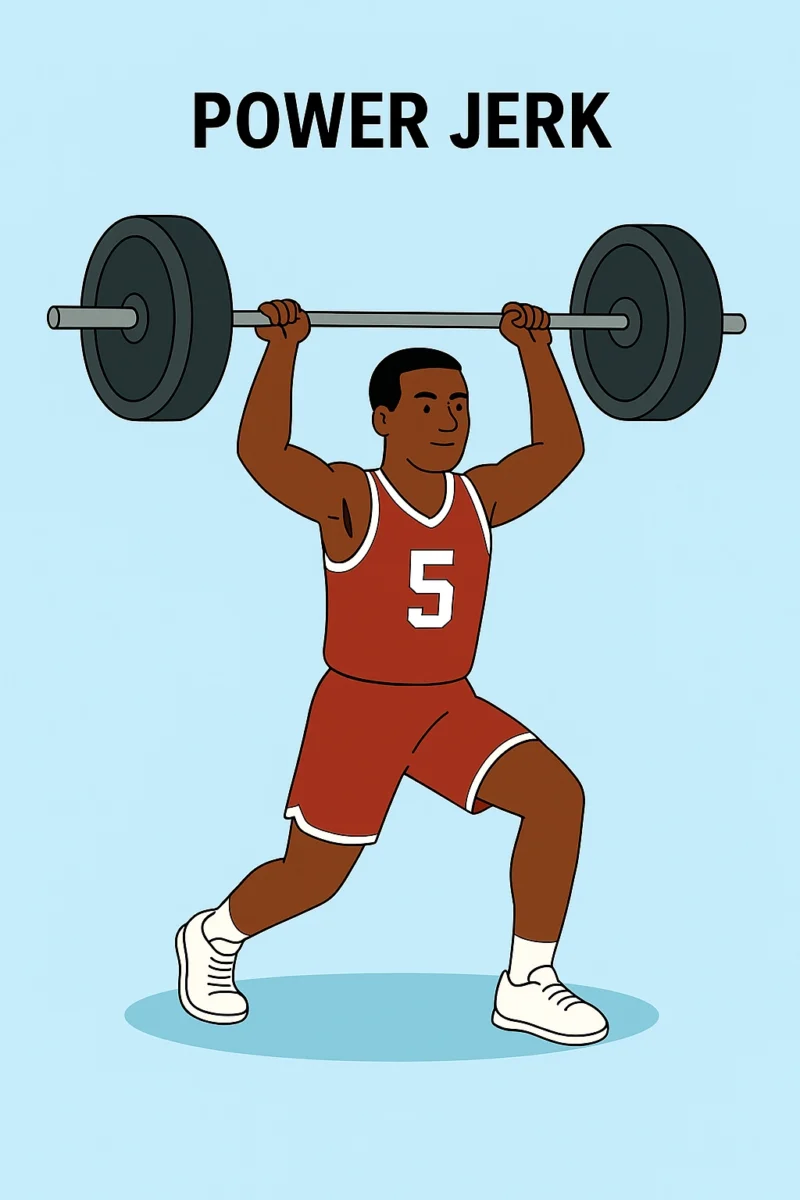
Start with 4 sets of 4 reps or 5 sets of 3 reps, resting 90 seconds between sets.
As you master this movement, you’ll notice improved jumping ability, quicker direction changes, and more controlled movements on the court.
Exercise #3 – Single Leg Squat
One of basketball’s most challenging yet practical exercises, single-leg squats will push your lower body strength and stability to new limits. This fundamental movement targets your quads, hamstrings, glutes, and calves while developing essential balance for dominating the court.
As a basketball player, you’ll find this exercise particularly beneficial for correcting muscle imbalances and enhancing your explosive power. By working each leg independently, you’re building the strength needed to maintain control during intense gameplay situations.
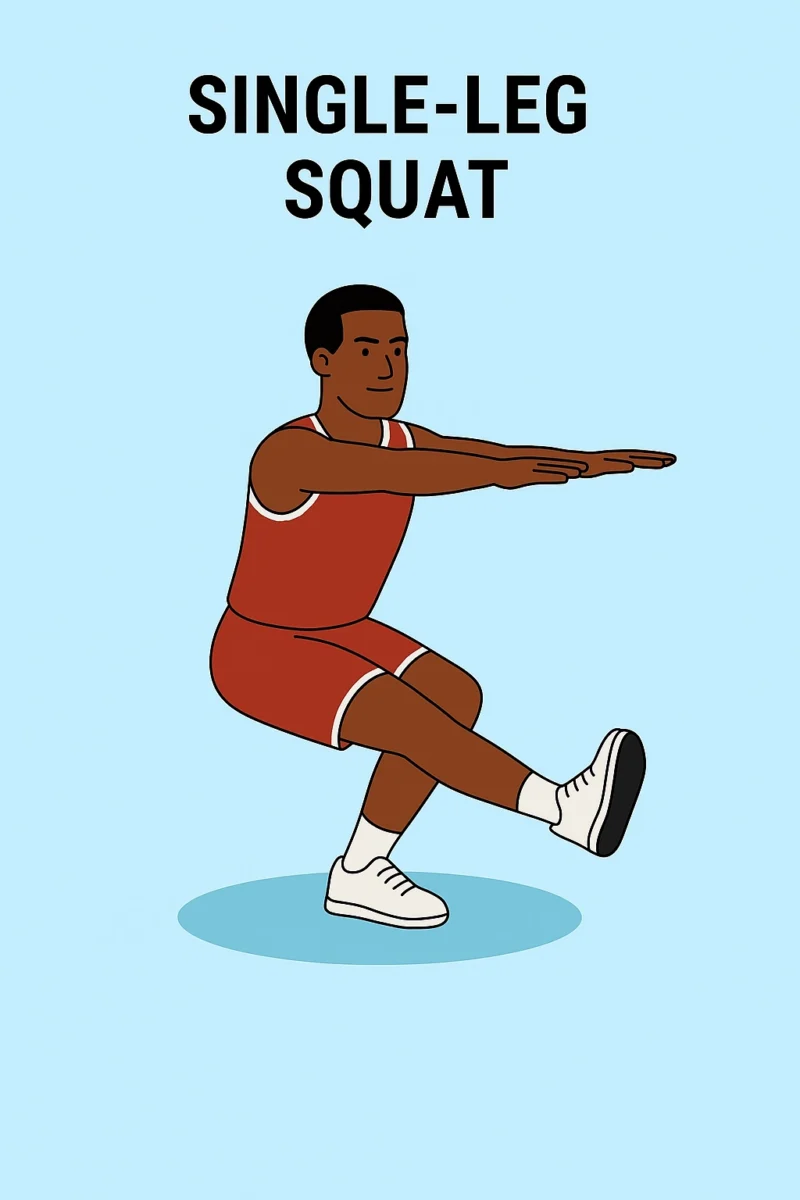
If you’re a taller player, you’ll especially appreciate how single-leg squats help manage the increased demands on your lower body. The stability gains you’ll achieve translate directly to improved on-court performance, enabling you to change direction faster and outmaneuver opponents with greater precision.
Exercise #4 – Dumbbell Military Press
When developing your basketball arsenal, the dumbbell military press stands as a cornerstone exercise for building powerful shoulders and upper-body control.
This fundamental movement directly enhances your overhead stability, which you’ll need for accurate shooting and defensive blocks.
Your strength training routine isn’t complete without this essential exercise.
Here’s how to maximize its benefits:
- Perform 7-9 reps per set for peak strength gains
- Focus on controlled movements to build stability
- Adjust weights based on your current fitness level
- Incorporate into your absolute strength training phase
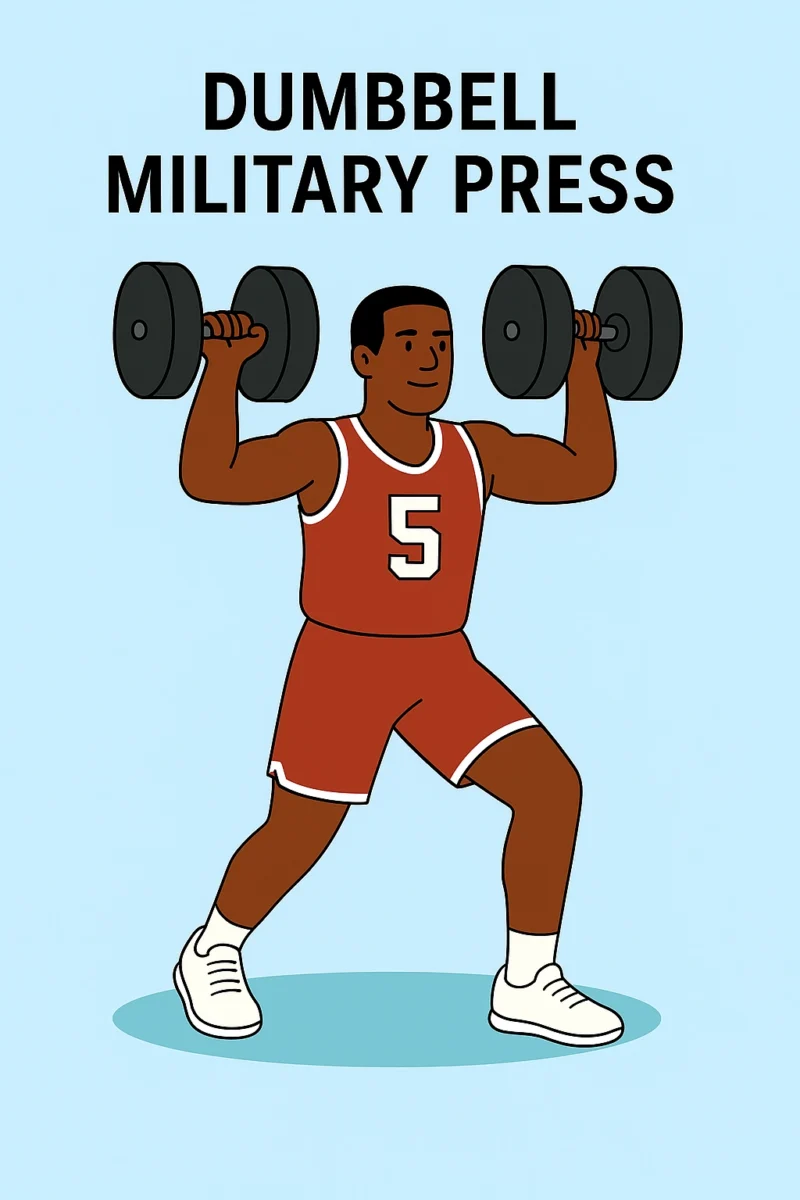
You’ll notice significant performance improvement on the court as your overhead strength develops.
Whether you’re launching three-pointers or fighting for rebounds, the dumbbell military press will give you that extra edge your game needs.
Exercise #5 – Pogo Jumps
To release explosive power on the basketball court, pogo jumps serve as your secret weapon for developing lightning-quick reactions and an impressive vertical leap.
This plyometric training exercise maximizes your explosive potential by minimizing ground contact while reaching peak height with each jump.
You’ll want to incorporate pogo jumps into your training routine 2-3 times per week.
Start with 3 sets of 10-15 jumps, focusing on quick, springy movements.
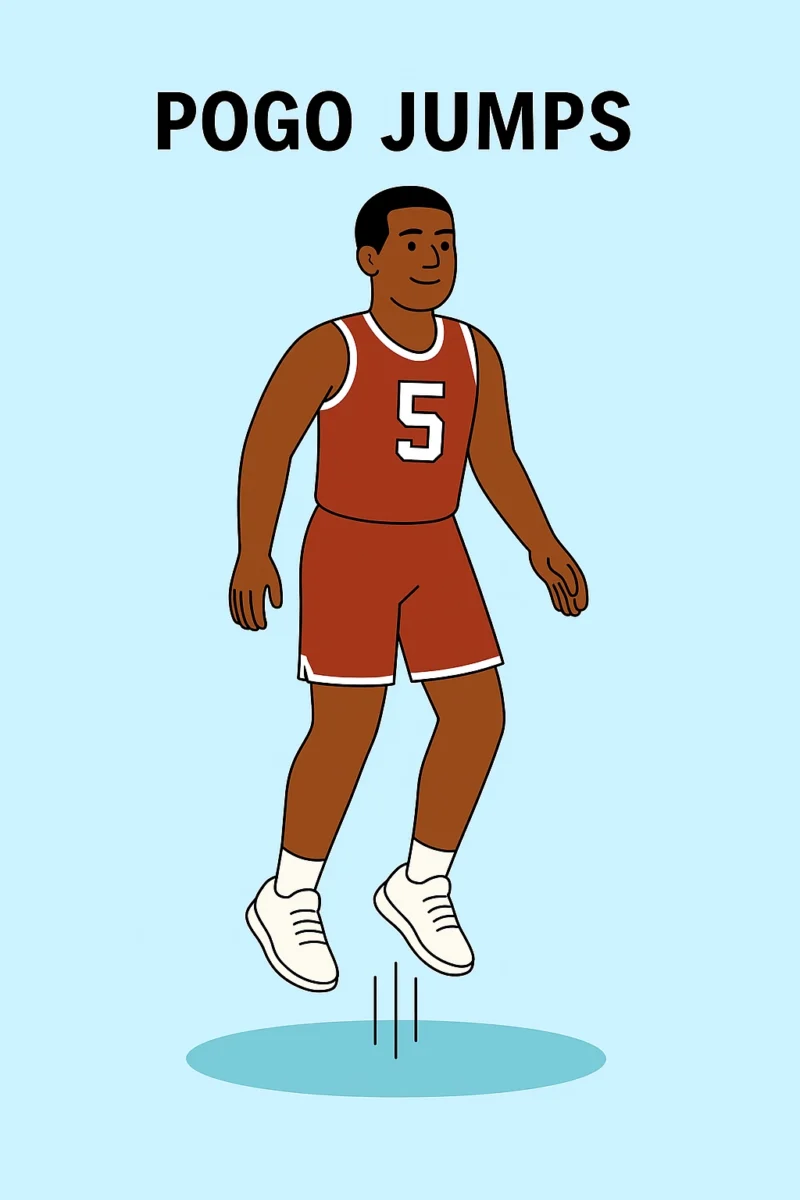
To measure progress, perform a vertical jump test before and after incorporating these exercises into your workout plan.
For an advanced challenge, try using PowerLastic bands.
They’ll force your muscles to work harder, accelerating your strength gains.
Exercise #6 – Rotating Jump Lunge
Explode into the next level of basketball performance with rotating jump lunges, a dynamic movement that’ll revolutionize your on-court agility.
This advanced basketball training exercise combines explosive power with rotational movement, pushing your lower body strength and core stability to new heights.
Here’s what makes rotating jump lunges essential for your game:
- Develops multi-directional agility for quick defensive slides
- Strengthens quadriceps, hamstrings, and glutes simultaneously
- Enhances core stability for better shot control
- Improves coordination during rapid direction changes
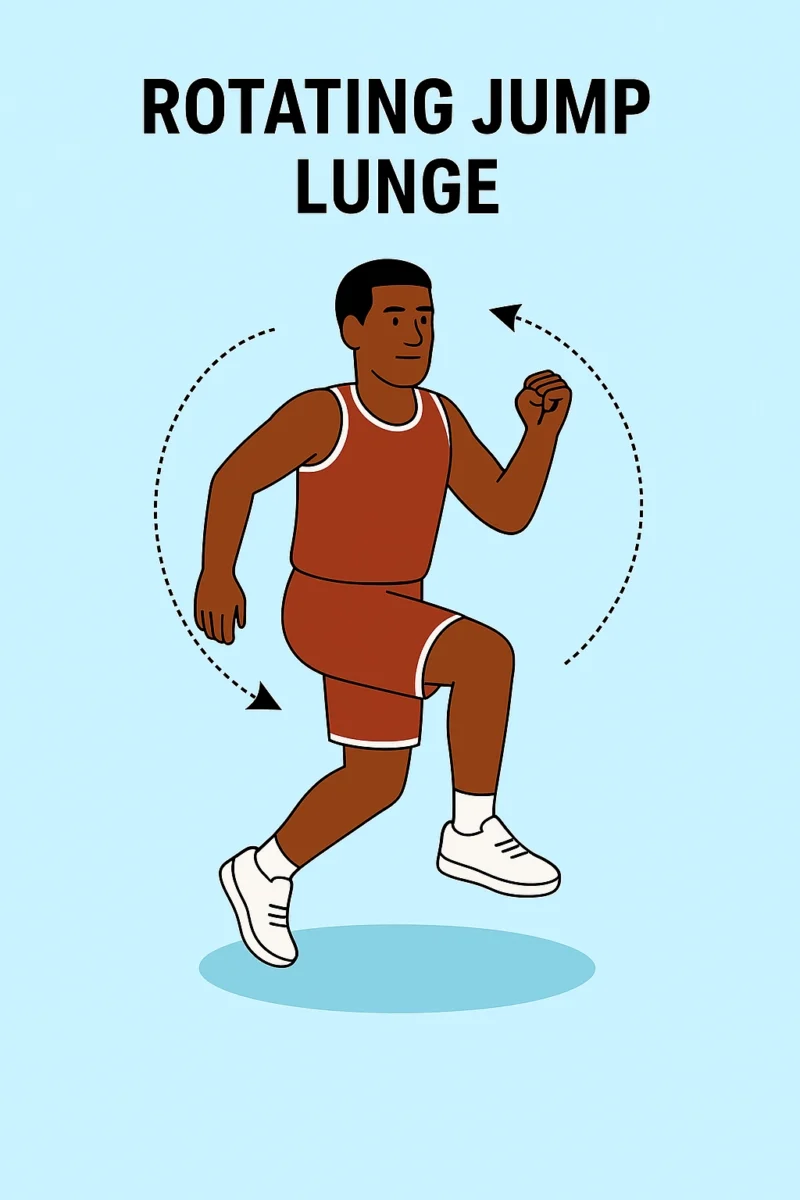
Want to level up? Add a medicine ball or hydro weight overhead while performing the movement.
You’ll challenge your trunk control and build the stability needed for those clutch moments when every pivot counts.
Exercise #7 -Neutral Grip Pull Up
After mastering the explosive power of rotating jump lunges, your basketball training needs equally dynamic upper body strength. Neutral grip pull-ups are your key to developing a powerful upper body that’ll dominate on the court, targeting your lats, biceps, and shoulders in one extensive movement.
To maximize your gains, pair these pull-ups with plyometric exercises. This combination doesn’t just build muscle – it creates explosive power that translates directly to your basketball performance. You’re training your body to generate force quickly, exactly what you need for those vital game moments.
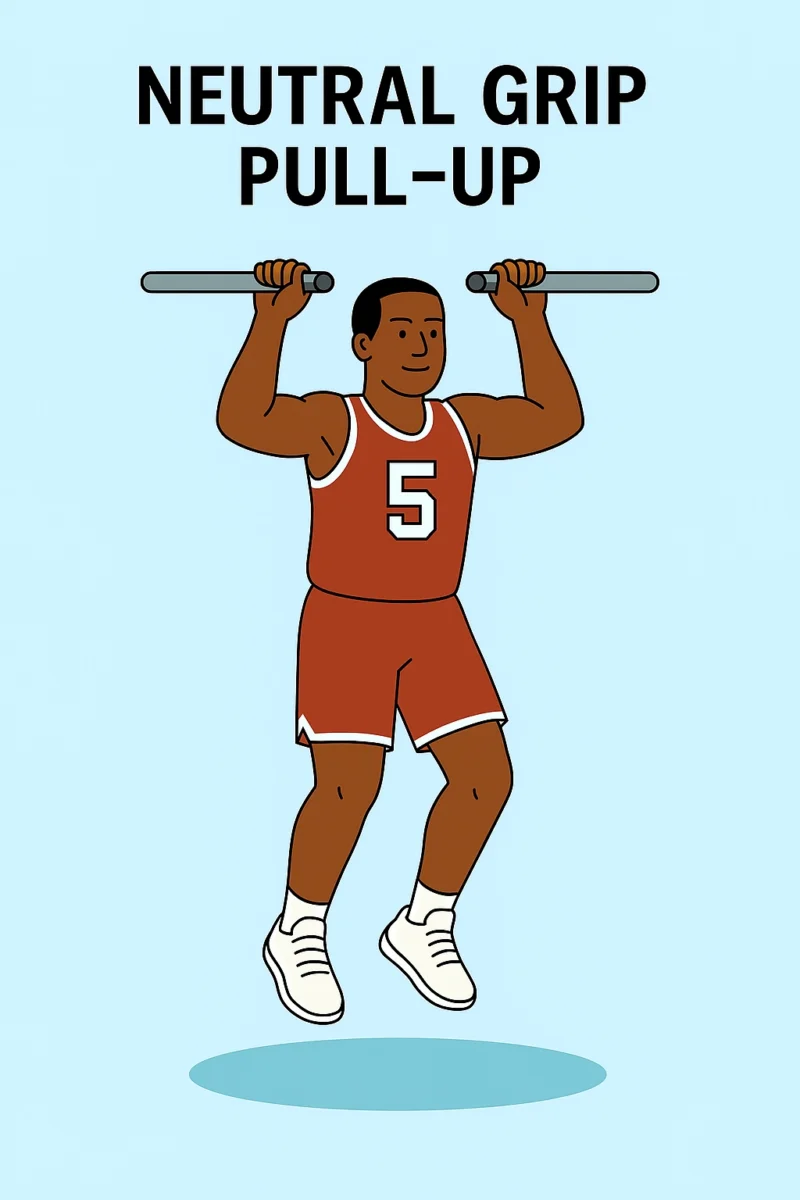
Make neutral grip pull-ups a consistent part of your training routine. As your strength and control improve, you’ll notice enhanced agility and power during games, giving you that competitive edge you’ve been working for.
Exercise #8 – Explosive Push Up
Launch your upper body training into overdrive with explosive push-ups – a dynamic movement that’ll revolutionize your basketball performance.
This power-packed exercise combines strength training and reflexive mechanics, making it perfect for developing court dominance. You’ll build explosive power in your chest, shoulders, and triceps while reducing the risk of basketball injuries through controlled, dynamic movement.
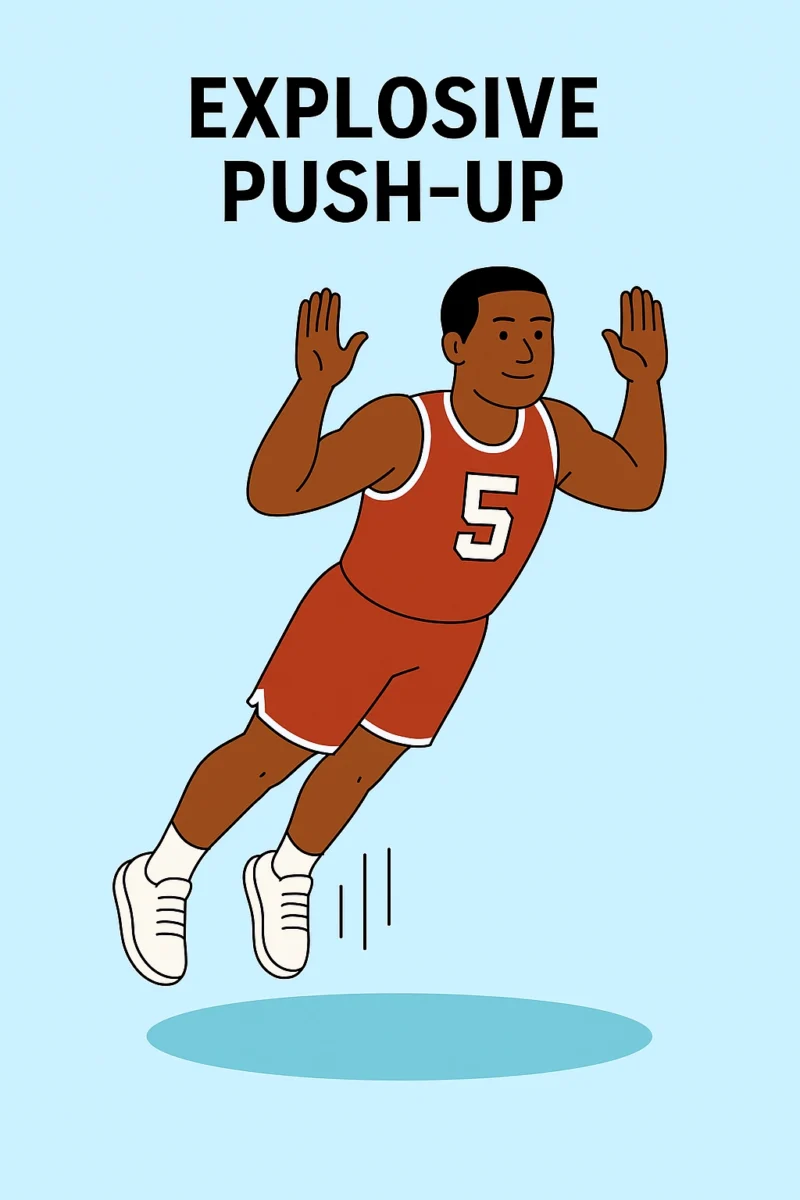
When paired with neutral grip pull-ups, you’re creating an all-encompassing upper body routine that’ll transform your gameplay.
For maximum results:
- Perform explosive push-ups with enough force to lift your body off the ground
- Rest 30-45 seconds between supersets
- Focus on explosive power during the pushing phase
- Maintain control during landing
This exercise will enhance your ability to push through defenders, deliver powerful passes, and maintain control during intense game situations.
Exercise #9 – Euro Step
The Euro Step balance takes your basketball training to new heights by combining strength work with game-specific movements. This plyometric drill directly translates to in-game situations while building essential core stability and balance.
Here’s how to perform it:
- Start with a medicine ball or weighted plate held across your body
- Position yourself 10 feet from an elevated platform
- Execute a euro step movement while holding the weight
- Step up onto the platform and pause
- Hold the weight across your body to complete each rep
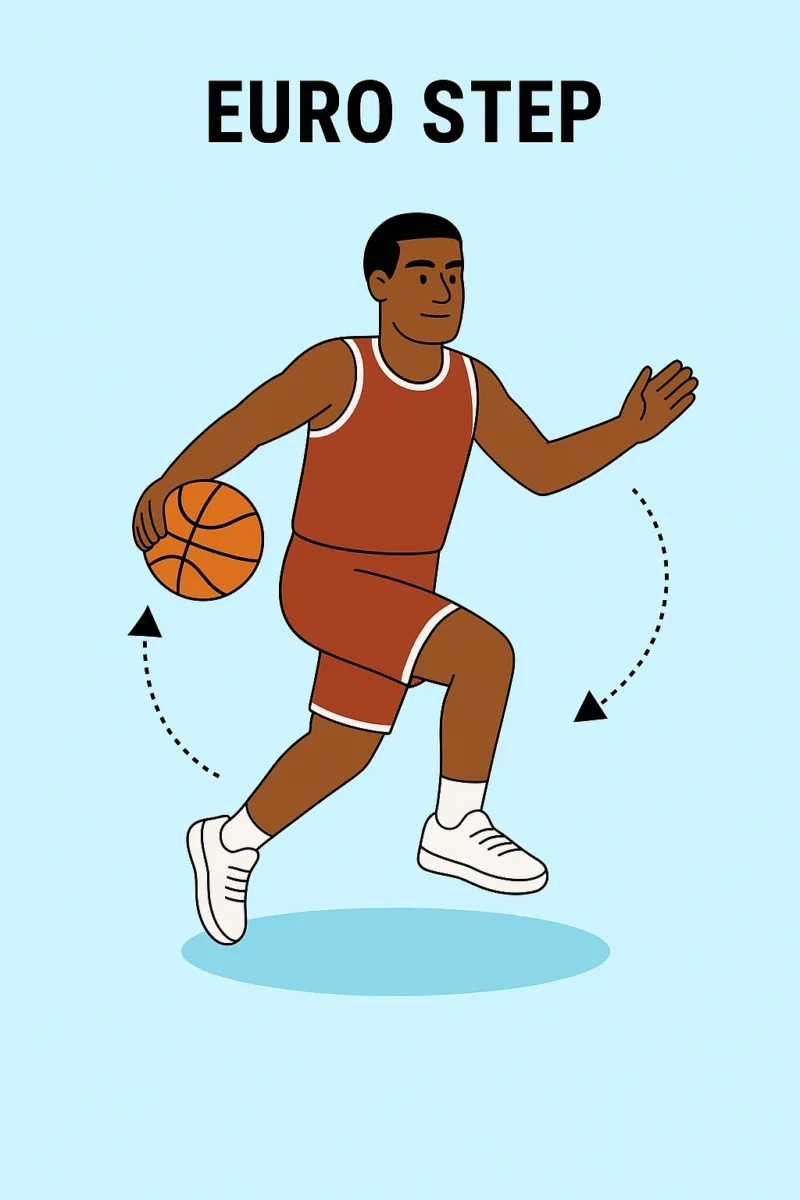
You’ll notice improved performance in your lateral movements and overall body control on the court.
This exercise strengthens the exact muscles and movement patterns you’ll use during actual gameplay, making it an invaluable addition to your training routine.
Exercise #10 – Stair Jumps
Jumping up stairs builds explosive power while being gentler on your joints than traditional box jumps.
You’ll find this exercise particularly beneficial if you’re a larger athlete seeking to improve your vertical leap without excessive impact.
To perform stair jumps effectively:
- Focus on quick, explosive movements
- Land softly on the balls of your feet
- Minimize ground contact time
- Drive through your legs with each leap
The real magic happens as you develop reactive strength – that split-second ability to spring into action.
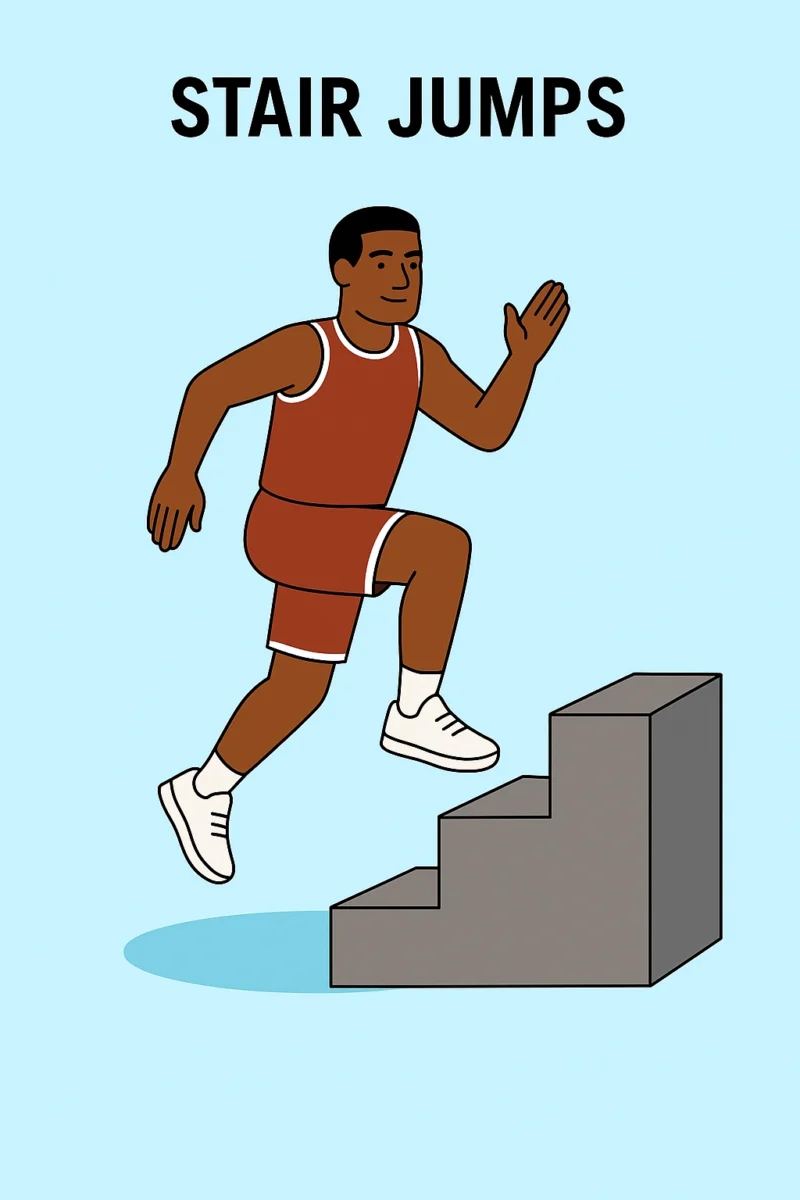
You’ll notice improved agility and explosiveness that translates directly to grabbing rebounds and making quick defensive moves on the court.
As your power increases, you’ll develop that unstoppable court presence that makes opponents think twice before challenging you under the basket.
Advanced Training Techniques
Olympic lifting helps basketball players improve their vertical jump. It builds strong muscles quickly. Use clean and jerk exercises. These movements increase power. Focus on proper form to avoid injury.
Resistance bands make muscles work harder. They are great for strength training. Bands add extra resistance. This helps improve muscle strength. Bands are also easy to carry anywhere.
Agility drills improve quick movements. Use ladder drills to enhance footwork. Cone drills help with direction changes. Drills should mimic game situations. Practice often for the best results.
Nutrition And Recovery For Optimal Performance
Athletes need a balanced diet for peak performance. Proteins help build and repair muscles. Carbohydrates provide energy for intense workouts. Healthy fats are essential for overall health. Vitamins and minerals support bodily functions. Water keeps the body hydrated.
Rest is crucial for muscle recovery. Stretching helps reduce muscle stiffness. Ice baths can reduce inflammation. Massage therapy eases muscle tension. Sleep is vital for recovery. Nutrition plays a significant role. Protein shakes help repair muscles. Carbohydrates refill energy stores. Hydration aids in recovery. Active recovery involves light exercise. Compression garments can reduce muscle soreness.
To Wrap It All Up
You’re now equipped with powerful exercises that’ll transform your basketball game from the ground up. Picture yourself exploding off the court for that game-winning dunk, powering through defenders, and maintaining perfect balance during intense plays.
By consistently implementing these strength training exercises, you’ll develop the explosive power and stability that separate good players from great ones. It’s time to dominate the court with your newfound strength and athleticism.
FAQs
Why Is Strength Training Important for Basketball Players?
Strength training is important for basketball players because it increases power, improves speed, enhances jumping ability, and reduces injury risk. Stronger muscles support explosive movements like sprints, rebounds, and dunks. Basketball players benefit from improved strength for better performance in defense, offence, and endurance.
Does Lifting Weights Make You Slower in Basketball?
Lifting weights does not make you slower in basketball if training focuses on explosive power and proper technique. Strength training improves speed by increasing force production. Excessive bodybuilding-focused lifting without agility or plyometric training may reduce quickness, but balanced programs enhance basketball performance.
Best Age to Start Strength Training for Basketball
The best age to start strength training for basketball is around 12-14 years old under supervision. At this age, athletes can build strength safely using bodyweight, resistance bands, and light weights with proper technique. Starting early develops muscular foundation, coordination, and injury prevention for basketball.
Can Strength Training Improve Your Vertical Jump?
Strength training can improve your vertical jump by increasing lower body power and explosive force. Exercises like squats, lunges, and plyometrics strengthen leg muscles and enhance neuromuscular coordination. Improved strength enables faster and more forceful jumps, which directly increases vertical jump height in basketball.
How Does Strength Training Prevent Basketball Injuries?
Strength training prevents basketball injuries by strengthening muscles, tendons, and ligaments, which stabilizes joints and improves body control. Exercises targeting ankles, knees, hips, and core reduce injury risk from jumps, cuts, and collisions. Balanced programs enhance flexibility and mobility, preventing common basketball injuries.
Should Basketball Players Lift During the Season?
Basketball players should lift during the season to maintain strength, prevent injuries, and support performance. In-season strength training uses lighter weights and lower volume to avoid fatigue while keeping muscles strong. Consistent lifting preserves off-season gains and enhances endurance, stability, and explosiveness during games.

